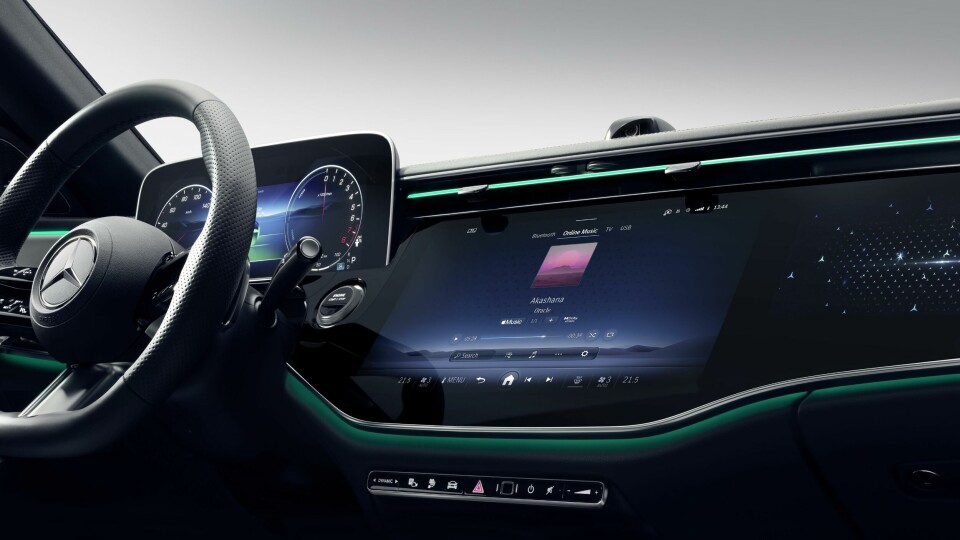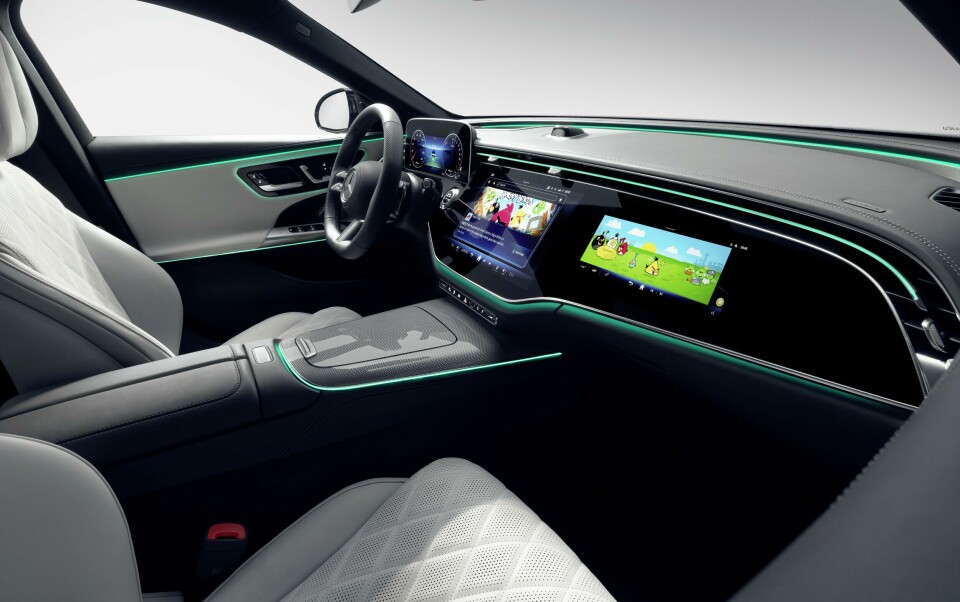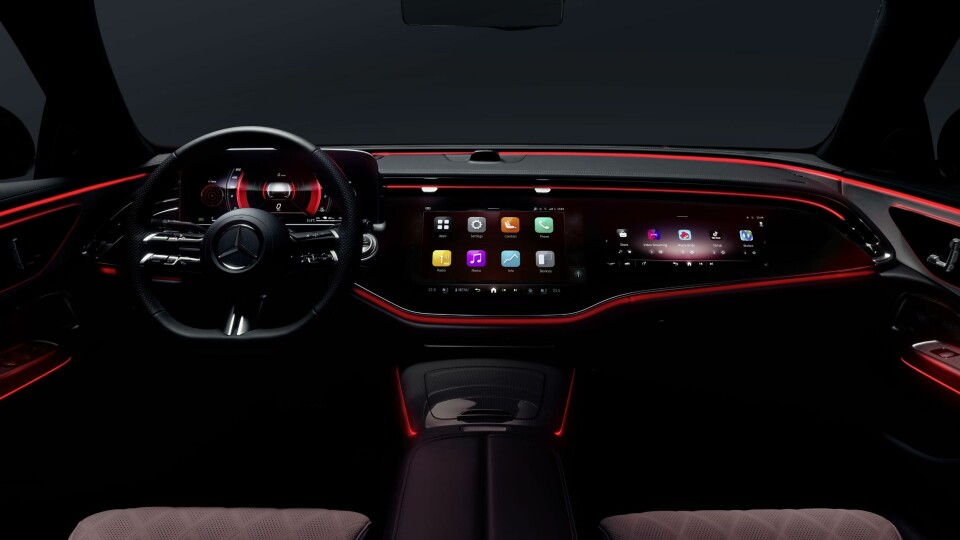
Sneak Preview: 2024 Mercedes-Benz E-Class interior
Chief design officer Gorden Wagener tells CDN’s Laura Burstein “the bigger the better” when it comes to the new, screen-filled instrument panel
Mercedes-Benz previewed a bevvy of new technology at a recent press event at its Silicon Valley office in Sunnyvale, CA, including a first look at the next-generation E-Class interior. The midsize sedan, set to launch later this year, is the harbinger for the third-generation MBUX user interface and a new IP design for the brand’s internal-combustion-engine models. With similarities to the gargantuan “Hyperscreen” found on Mercedes-Benz’s electric EQ models, the E-Class features pillar-to-pillar displays that will run a range of apps from Angry Birds to Zoom.
“It’s important to get bigger and bigger with screen sizes,” Mercedes-Benz Chief Design Officer Gorden Wagener said as we sat side-by-side in the new E-Class cabin. “Small displays make an interior look old. So the bigger the better.”

Where the EQ’s Hyperscreen integrates all three displays into one vast surface, the E-Class uses a separate, floating driver’s display and forgoes the more expensive 3D curved glass. Wagener points out the thin, horizontal vents that run along the top of the E-Class IP, a major change from the large, round turbines found in other Mercedes-Benz interiors. “It’s the new way we hide the vents,” he explains. “Usually we make them look like a chronograph watch to bring out that feeling of analogue pleasure, but here the focus is the wraparound cabin with these intelligent light bands” he says.
The screen is an individual design piece
Also gone are any analogue buttons or knobs — including the volume wheel, which has been replaced with tiny digital controls below the centre screen, a change that’s not necessarily for the better. Ambient lighting wraps around the cabin and frames the IP in a wing-shaped graphic. “The screen is an individual design piece, not just just taken from the shelf,” Wagener explains, “which makes it very different from other manufacturers that just take a screen and stick it in. That makes the difference between being a luxury company and a mainstream company.”

Mercedes is betting on pillar-to-pillar displays — even in show cars like the Vision EQXX concept we saw last year — at a time when other German brands are experimenting with eliminating screens altogether. Audi’s Activesphere, unveiled last month, projects images on large, clean interior surfaces through virtual-reality goggles, while the BMW Vision Dee shown this year at CES relies on “shy tech” and projects images directly onto the windscreen. Of course, show cars are often exercises in the theoretical, but it’s clear Mercedes-Benz execs plan on keeping big screens around for a long time to come.
The motivation behind this, however, has just as much to do with Mercedes-Benz’s business plans as it does design. At the same event, CEO Ola Källenius told a packed house of journalists, investors and dealers that the company would be fitting all future Mercedes-Benz vehicles with its own proprietary operating system, dubbed MB.OS. “We are on a journey to also become a software company,” Källenius said during the presentation. “For the first time in history, the complete Mercedes infotainment domain has been fully programmed by us.”
The chip-to-cloud architecture — created partly in-house and supported by partners including NVDIA and Google Maps — decouples software and hardware releases. Combined with over-the-air updates, it means, according to Källenius, “The product doesn’t get old, and it actually gets better over time.”
UI/UX is our fastest growing department
While some of the industry moves toward simpler, universal phone connectivity (think of the demand for Android Auto and Apple Car Play), Mercedes is taking a different tack. “There’s an ultimate goal not to mirror your phone,” chief technology officer Markus Schäfer says. Love it or hate it, that means plenty of work for the UI/UX teams. “From a design point of view, when the whole IP is a screen it gives a new approach to design, so what happens on the screen becomes more important,” Wagener says. “UI/UX is our fastest growing department.”
At the same time, Wagener says the teams still work independently, unlike other studios that tend to take a more integrative approach. “Surprisingly it’s still pretty separated,” Wagener says. “Exterior is still doing their stuff, and interior is still doing their stuff because what happens on the screen doesn’t really matter for the interior. You just have to bring the screen into a good position so you can touch it and look at it. In the advanced studios we launched that kind of approach where all the designers come together to make this holistic masterpiece, which in fact doesn’t happen for series production. With a new concept it’s good when people work together, but then at a certain point you have to bring it into the silos.”
The 2024 Mercedes-Benz E-Class is slated to launch at the end of this year, but a more sophisticated interface (which we saw at the same event but couldn’t photograph) will be available later. Wagener did give a hint about what to expect: “The next big thing for us will be powered by a game engine, going from a two-dimensional to a three-dimensional UI.” The MB.OS, meanwhile, is expected to debut at the end of 2024 for sale in vehicles in 2025.
















